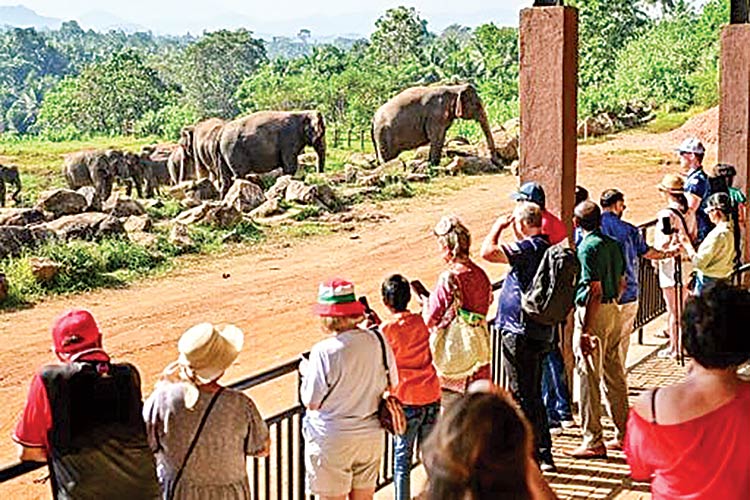Life style
Breadfruit The Highly Beneficial Magical Fruit
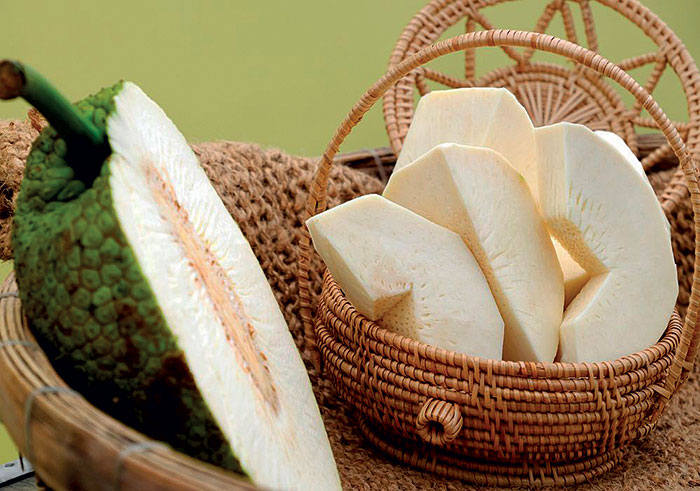
Breadfruit is a versatile fruit that belongs to the mulberry and jackfruit botanical family. They grow across tropical regions and the Pacific Islands, Caribbean, and Southeast Asia. Because of their availability, they are part of a staple diet in these locations. The common areas include Indonesia, the Philippines, Sri Lanka, and Southern India. In addition, due to its nutritional profile, breadfruit is full of health benefits. For example, it is rich in vitamin C and thiamine. It also contains a high amount of dietary fibre.
The name breadfruit comes from the apparent association with bread. People cook the semi-ripe food, and the texture resembles that of bread with a hint of potato-like flavour. The roasted seeds taste like chestnuts, and you can eat them boiled or baked or ground into flour.
Breadfruit brings various health benefits to you. For example, it has anti-cancer properties, helps improve digestion, improves bone health etc. In addition, breadfruit flour is gluten-free and has a low glycemic index. Therefore, it is an excellent option for people with diabetes.
Breadfruit is one of the superfoods. It is a daily staple food for millions across the globe. It is due to its expansive nutrient profile. In addition, breadfruit enhances different dishes, ranging from soups to pasta.
Nutritional Value of Breadfruit
Breadfruit is rich in vitamins, minerals, and other components. Also, they contain vitamin E, vitamin C, vitamin K, and B complex vitamins. They also contain minerals like folate, potassium, and many others. In addition, breadfruit contains high amounts of dietary fibre.
As per USDA, around 100 grams of breadfruit serving contains:
Calories: 103 kcals
Carbohydrates: 27.1 g
Fat: 0.23 g
Protein: 1 g
Fibre: 4.9 g
Vitamins and Minerals
Breadfruit also contains fair amounts of vitamins and minerals.
Potassium: 490 mg
Calcium: 17 mg
Iron: 0.5 mg
Vitamin C: 29 mg
Vitamin K: 0.5 mg
Folate: 14 mg
Vitamin B6: 0.1 mg
Vitamin E: 0.1
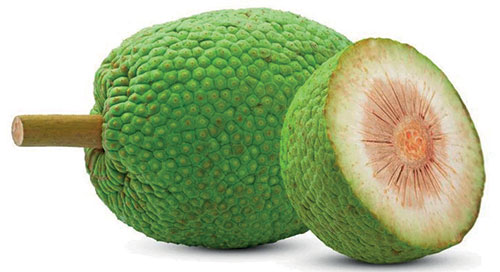 Health Benefits of Breadfruit
Health Benefits of Breadfruit
Breadfruit has a rich nutrient profile. Therefore, the health benefits are innumerable. It is abundant in fibre. It is an excellent source of proteins, essential amino acids, vitamin C, B1, B5, and minerals. These nutrients help strengthen the immune system by reducing the chances of infections. They also improve skin and hair and aid in bone growth. In addition, the nutrients regulate diabetes, lower cholesterol levels, and boost skin and hair health.
Improves Heart Health
Breadfruit is rich in potassium. Potassium helps in smooth blood flow through the arteries. It does so by regulating muscular contraction in the heart. It, in turn, controls your heart rate and blood pressure.
High levels of bad cholesterol result in multiple cardiovascular diseases. These diseases include atherosclerosis, heart attack, stroke etc. Studies show that dietary fibre helps in reducing cholesterol. This correlation is because fibre binds with cholesterol and carries it out of the body. In addition, omega-3 fatty acids help increase good cholesterol levels.
Prevents and Controls Diabetes
Breadfruit is an ideal food for people with diabetes. Since they are abundant in dietary fibre and protein, they are a protein-dense, low glycemic option. A study suggested that breadfruit flour helps control blood sugar levels in people with diabetes. Fibre passes through the digestive tract slowly. As a result, the food takes time to get digested. Thus, blood glucose levels don’t shoot up after a meal.
Aids Digestion
The dietary fibre helps in improving bowel movements. Dietary fibre absorbs water in the intestines and softens the stool. As a result, the stool passes out smoothly. Thus, fibre rich foods like breadfruit prevent constipation and indigestion.They also improve gut health by fostering good bacteria in the body. In addition, studies have suggested that they prevent infections and inflammation by improving immunity.
Improves Brain Function
Breadfruit is a rich source of iron, vitamin C and many other nutrients. Iron is necessary for the proper functioning of blood cells. They play a significant role in transporting oxygen to all organs. In addition, low iron levels can result in anaemia. Also, due to the lack of iron, the oxygen supply to the brain reduces.
Vitamin C, vitamin E, omega-3 fatty acids are antioxidant nutrients. Studies have demonstrated that antioxidants nutrients reduce the risk of Alzheimer’s disease. This benefit is because they reduce the oxidative damage caused by free radicals. Moreover, antioxidants protect the brain cells and tissues. They also slow down the development of the disease.

Improves Reproductive Health
Breadfruit has Omega 3 and 6 fatty acids. Therefore, it improves both male and female fertility. A study showed that omega-3 fatty acids improve sperm motility. In addition, they help promote sperm synthesis.
Studies also suggest that omega-3 fatty acids improve PCOD in women. It also enhances insulin resistance. In addition, antioxidants present in breadfruit aid in preventing prostate and ovarian cancers.
Prevents Cancer
Antioxidants such as vitamin A, vitamin C, and omega-3 fatty acids prevent cancer. Usually, cancer occurs due to the uncontrollable growth of cells, resulting from long-term free radical damage to the cells. As already stated, antioxidants help reduce the free radicals in the body. Thus, they prevent the growth and development of cancer. In addition, research has also demonstrated that antioxidants help destroy cancer cells.
Helps in Weight Management
Breadfruit fits effectively in a weight loss diet plan. Breadfruit is full of dietary fibre, essential to weight management. In addition, fibre keeps one satiated for more extended periods. As a result, the urge to snack on unhealthy foods reduces. Therefore, it helps prevent unhealthy weight gain.
Moreover, breadfruit is a dense source of protein. It contains essential amino acids. Notably, it includes leucine, isoleucine and valine. They are vital in building up muscle. In addition, studies suggest that protein boosts metabolism. Thus, consuming breadfruit can help in losing weight Improve Skin Health
Vitamin C promotes collagen synthesis that improves skin elasticity. It also regenerates new skin cells. Additionally, studies have shown that vitamin C protects skin from sun damage. Therefore, it helps reduce the impact of harmful UVA and UVB rays- wrinkles, skin laxity, signs of ageing, etc. Thus one can conclude that eating this fruit safeguards you from skin changes linked to ageing. Since good skin results in a youthful appearance, adding breadfruit to the diet is a sure shot way to stay well-turned-out forever.
Regulates Blood Pressure
Hypertension can lead to stroke or heart failure when worsened. As per research, the potassium in breadfruit has antihypertensive properties. It helps reduce the stress on blood vessels by widening the arteries. Therefore, this makes the blood flow easier. Thereby, it regulates blood pressure and prevents hypertension.
Improves Bone Health
Breadfruit has very high mineral content. It also includes calcium, phosphorous, manganese, and magnesium. Research suggests that calcium and phosphorus are equally essential for healthy bones. They form a robust structure, improve bone density and prevent fractures. Ultimately, they reduce the risk of diseases like osteoporosis. Vitamin K in breadfruit also reduces the risk of bone disorders.
Strengthens Immunity
We already know the benefits of antioxidants on immune function. Additionally, fibre also plays a role in immunity. Studies show that fibre acts as food for the good bacteria in the gut. Therefore, it helps in promoting good bacteria. Meanwhile, they also destroy harmful bacteria.Breadfruits reduce inflammation in the body. As a result, they improve the immune response to such pathogens and destroy them. They also help in regulating bowel movements. –BBC
Life style
Sri Lanka’s first elephant orphanage celebrates 50 years

By Amal Jayasinghe
Pics by Ishara Kodikara
Sri Lanka’s main elephant orphanage marked its 50th anniversary on Sunday february 16 with a fruit feast for the 68 jumbos at the showpiece centre, reputedly the world’s first care home for destitute pachyderms. The Pinnawala Elephant Orphanage lavished pineapples, bananas, melons and cucumbers on its residents to celebrate the anniversary of their home, which is a major tourist attraction.
A few officials and tourists invited to the low-key celebration were served milk rice and traditional sweets while four generations of elephants born in captivity frolicked in the nearby Maha Oya river.
“The first birth at this orphanage was in 1984, and since then, there have been a total of 76,” said chief curator Sanjaya Ratnayake, as the elephants returned from their daily river bath.
“This has been a successful breeding programme, and today we have four generations of elephants here, with the youngest 18 months old and the oldest 70 years,” he told AFP.
The orphanage recorded its first twin birth in August 2021 — a rarity among Asian elephants — and both calves are doing well.
Two years before the orphanage was formally established as a government institution in February 1975, five orphaned elephants were cared for at a smaller facility in the southern resort town of Bentota.
“Since the orphanage was set up at Pinnawala in 1975, in a coconut grove, the animals have had more space to roam, with good weather and plenty of food available in the surrounding area,” Ratnayake said.
The home requires 14,500 kilos of coconut and palm tree leaves, along with other foliage, to satisfy the elephants’ voracious appetites.
It also buys tonnes of fruit and milk for the younger calves, who are adored by the foreign and local visitors to the orphanage, located about 90 kilometres (56 miles) east of the capital Colombo.
It is also a major revenue generator for the state, earning millions of dollars a year in entrance fees. Visitors can watch the elephants from a distance or get up close and help scrub them during bath times.
– Tragic toll –
The facility lacked running water and electricity at its inception but things improved as it gained international fame in subsequent years, said retired senior mahout K.G. Sumanabanda, 65.
“I was also fortunate to be present when we had the first birth in captivity,” Sumanabanda told AFP, visiting the home for the jubilee celebrations.
During his career spanning over three decades as a traditional elephant keeper, he trained more than 60 other mahouts and is still consulted by temples and individuals who own domesticated elephants.
Twenty years ago, Sri Lankan authorities opened another elephant home south of the island to care for orphaned, abandoned or injured elephants and later return them back to the wild.
While Pinnawala is seen by many as a success, Sri Lanka is also facing a major human-elephant conflict in areas bordering traditional wildlife sanctuaries.
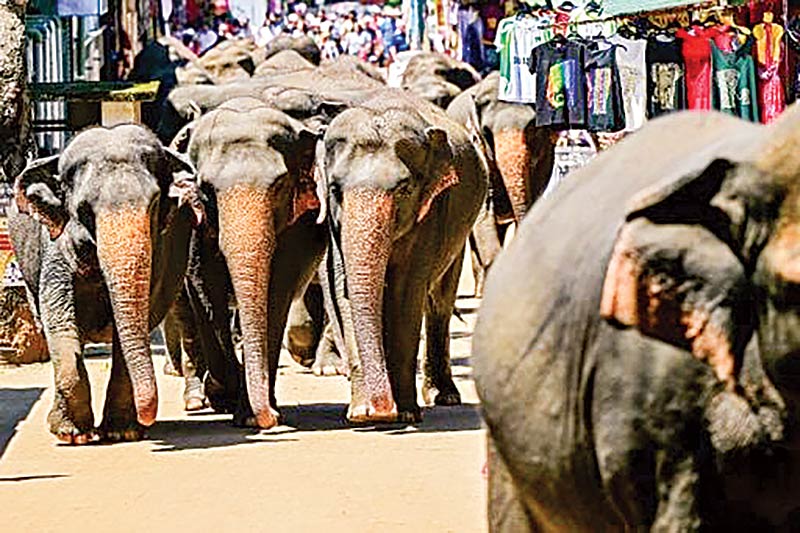
Elephants return to Sri Lanka’s Pinnawala Elephant Orphanage after taking their daily bath in a river
Deputy Minister of Environment Anton Jayakody told AFP on Sunday that 450 elephants and 150 people were killed in clashes in 2023, continuing an alarming trend of fatalities in the human-elephant conflict. The previous year saw 433 elephants and 145 people were killed.
Killing or harming elephants is a criminal offence in Sri Lanka, which has an estimated 7,000 wild elephants and where jumbos are considered a national treasure, partly due to their significance in Buddhist culture.
But the massacre continues as desperate farmers face the brunt of elephants raiding their crops and destroying livelihoods.
The minister was confident the new government could tackle the problem by preventing elephants from crossing into villages.
“We are planning to introduce multiple barriers—these may include electric fences, trenches, or other deterrents—to make it more difficult for wild elephants to stray into villages,” Jayakody told AFP.
Life style
Growing the Cultural Landscape with Suhanya Raffel
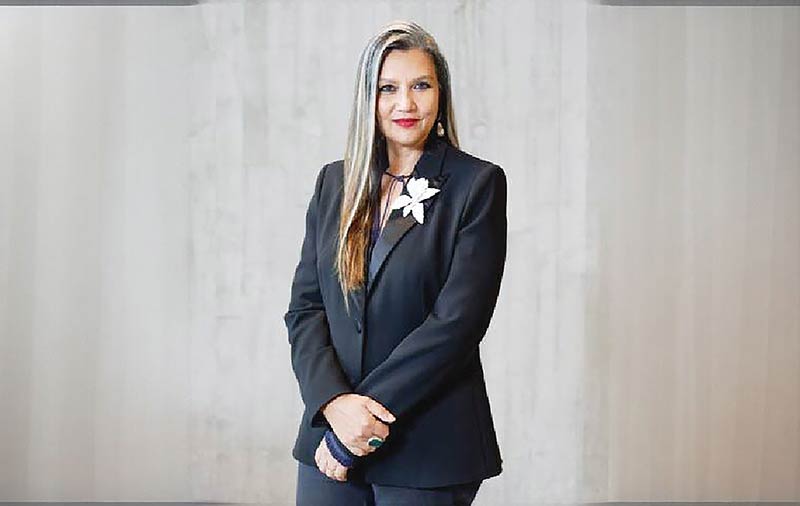
The Geoffrey Bawa Trust which was launched its 2025 is followed by Curatorial Conversations Series. Recently a presentation was made S by M+ Museum director and Geoffrey Bawa Trustee Suhanya Raffel. Speaking at the new Bawa Space on Horton Place, Raffel drew on extensive experience in the museum and art world to present insights and programming from the M+ Museum in Hong Kong. M+ is Asia’s first global museum of contemporary visual culture and presents itself as an intersection of visual art, design and architecture, and the moving image.
The evening presented an opportunity to hear from a leading expert in the museum field and discuss Sri Lanka’s present and future cultural landscape. It also highlighted the role of the Geoffrey Bawa Trust in conserving the legacy of the architect and his collaborators, and promoting contemporary art and design. “There are amazing artists, great designers, and reactive minds in Sri Lanka and the region,” Raffel said at a press event earlier in the afternoon. “There is opportunity in the aspiration to establish things, artists doing very important work, and the energy of individuals to try to make a difference.”
In part, this opportunity stems from the lack of established large-scale infrastructure to conserve Sri Lanka’s modern cultural legacy and support emerging artists. While there is the scope to shape the domestic art world and build institutions reflective of the local cultural community, there are also limitations and challenges in realising this potential.
Raffel spoke extensively about the need to build curatorial skills and knowledge and nurture cultural leaders in the region. Recognising this need, the Geoffrey Bawa Trust maintains public programmes, including exhibitions, residencies, tours, and lectures, to broaden public discourse and knowledge on the built environment and the arts in Sri Lanka and overseas. To fulfil curatorial needs and encourage growth in artistic and cultural institutions such as museums, the Trust employs a dedicated curatorial team and runs a robust internship and training programme. It is hoped that building this skill base will encourage others to explore similar career opportunities and support art, design, and architecture in the region. Sri Lankan visual arts over the past century have enjoyed wide international acclaim. “Sri Lanka is known globally for its creative work,” says Raffel, “it is culturally very strong.”
Geoffrey Bawa is a great example of this global influence. During his lifetime, the architect was very well-known in Sri Lanka and among contemporaries around the world. His structural, landscape, and furniture designs continue to guide and inspire. “It is very important for makers to be seen with their international peers,” Raffel explains. This cultural engagement on regional and international platforms is paramount for ensuring open dialogue and exchange. This means supporting collaborations, encouraging foreign markers to come to Sri Lanka, and exhibiting Sri Lankan work internationally.
The Trust is working to support this global dialogue by hosting installations by artists and makers from Sri Lanka and abroad, as was done in celebration of Geoffrey Bawa’s 100th birthday and again throughout the To Lunuganga programme from 2023-2024. The Trust took Geoffrey Bawa’s work to the world in 2024 with the travelling It is Essential to be There exhibition in Sri Lanka, India, and the United States.
The Trust is proud to be part of major professional international forums such as the International Confederation of Architectural Museums and the Committee for Modern and Contemporary Art Museums, both affiliated with the International Council of Museums. These platforms are vital for global knowledge sharing and advocacy. “We want more of these types of collaborations to happen both with the Geoffrey Bawa Trust, but also other arts and cultural institutions in Sri Lanka,” says Raffel.
In furthering this mission, the Trust is excited to present the new Bawa Space as the organisation’s public face and offer opportunities for the public to engage with the Trust’s work. Located in a recently restored Bawa-designed house from 1959, the Bawa Space doubles as the Geoffrey Bawa Trust headquarters and archives, as well as a new gallery and space for talks and events that will continue year-round.
Life style
Colombo Fashion Week 19-22 February: Two decades of creating the Fashion Eco-system in Sri Lanka

This year CFW will showcase a selection of Emerging Designers alongside established Sri Lankan designers. Adding international flavour will be well known designers from India Suket Dhir, Urvashi Kaur and Zaheer Abbas from Pakistan.
Colombo Fashion Week (CFW), presented by Mastercard, enters its 22nd year in 2025 with its Summer edition, marking another milestone in its journey as one of the four fashion weeks in Asia that have surpassed 2o years.Emerging Designer initiative of CFW this time remains one of its main pillars, providing an entry point for the next generation to pursue design-based entrepreneurship. This in line with the introduction of the Craft Fashion Fund this year is a testament to this commitment. The Craft Fashion Fund will select two winners, one who incorporates batik and another who utilizes crafts other than batik. This initiative passed 20 years.
Over the years, CFW has proven to be the backbone of Sri Lanka’s fashion design industry—its only voice—while creating a fashion ecosystem that provides support to new emerging designers entering the industry. Informally known as South Asian Fashion Week, it serves as a regional hub due to its geopolitical advantage. It is also one of the most significant fashion weeks in South Asia, having played a crucial role in revitalizing the country’s fashion design industry.
This year, Colombo Fashion Week has also expanded its international footprint since joining as a founding member of the newly created BRICS International Fashion Federation. This aligns with CFW’s ongoing mission to bridge diverse fashion markets and foster creative dialogue across continents. As part of this federation, CFW has signed a designer exchange program with BRICS, where a designer from a BRICS country will showcase their work at CFW, and a Sri Lankan designer will present their collection there. CFW continues to play a pivotal role in presenting Sri Lanka through the lenses of arts, culture, and sustainability, further contributing to destination marketing on a global scale.

The Head Table From L to R: Harsha Maduranga, GM – Vision Care, Yatila Wijemanne, Chairman – Juniper, Dr. Vibash Wijeratne, Dirand CEO – Ninewells, Shamara Silva, Mrkt & Media Dir – Unilever, Ruwan Perera, CEO – NDB Wealth, Kamal Munasinghe, Area VP and GM – Cinnamon Grand, Ajai Vir Singh, Founder – CFW, Sandun Hapugoda, Country Mgr – Mastercard, Samrat Datta, GM – Taj Samudra, Bernhard Stefan, MD – Nestlé Lanka, Ramani Fernando, Founder – RF Salons, Arjuna Kumarasinghe, MD -Cargills Food & Beverages
Ajai Vir Singh, Founder, Colombo Fashion Week stated: “Colombo Fashion Week has consistently demonstrated its commitment to developing Sri Lanka’s fashion industry through strategic international partnerships and innovative platforms. Our growing international recognition and expanding designer network reflects vital role this platform plays in positioning Sri Lanka through its creative industries.”
Mastercard, as the presenting partner, continues to champion CFW’s vision of sustainable and inclusive fashion innovation, focusing on digitizing sustainability initiatives and supporting small and medium fashion enterprises.
Sandun Hapugoda, Country Manager, Sri Lanka & Maldives, highlights: “Mastercard is thrilled to partner with Colombo Fashion Week once again, celebrating the incredible talent and creativity within the fashion industry. This partnership aligns perfectly with our commitment to support local artistry. Together, we aim to inspire new possibilities, connect communities, support sustainable fashion initiatives, and elevate the local fashion industry to a global audience, delivering a truly priceless experience. We also anticipate CFW to be a great support to boost the Sri Lanka tourism industry as well.”
The Craft Fashion Fund encourages young designers to engage with and incorporate Sri Lankan crafts into their collections. This approach has been highly successful for designers in other South Asian countries, where traditional crafts have helped establish a unique identity for them. Sri Lankan fashion has its best opportunity to develop a distinct identity when designers integrate local crafts into their work. The developing of this identity has been professed by CFW among the design fraternity, so they are able to create market demand beyond Sri Lanka.
The Emerging Designer initiative of CFW remains one of its main pillars, providing an entry point for the next generation to pursue design-based entrepreneurship. This in line with the introduction of the Craft Fashion Fund this year is a testament to this commitment. The Craft Fashion Fund will select two winners, one who incorporates batik and another who utilizes crafts other than batik. This initiative will support two exceptional designers, ensuring the preservation and evolution of Sri Lanka’s rich artistic heritage. This season, fifteen emerging designers will present their collections, further demonstrating CFW’s dedication to fostering the next generation of fashion talent.
Fazeena Majeed Rajabdeen, Director & CEO, Colombo Fashion Week further added: “Colombo Fashion Week, with its focus on nurturing new talent and emerging designers, has played a pivotal role in reviving and propelling Sri Lanka’s fashion industry. We are proud to present 15 emerging designers this year and to have Sharmila Ruberu mentoring these designers on collection planning. This, along with the Craft Fashion Fund, reiterates our commitment to further the thriving ecosystem we have built, embracing sustainability and empowering young talent.”
Colombo Fashion Week Summer 2025 is set to transform Colombo into an immersive fashion destination by showcasing designers across three of the city’s most prestigious locations. The key partners of Destination Colombo includes Shangri-La, Taj Samudra, and Cinnamon Grand. The shows will feature an impressive roster of international and local talent, including designers from India, Italy and Russia. Renowned creators such as Rimzim Dadu,
Cettina Bucca, Suneet Varma and JJ Valaya, will present alongside celebrated Sri Lankan designers including Fouzul Hameed, Sonali Dharmawardena, Asanka De Mel, Aslam Hussein, Kamil Hewawitharana, Dimuthu Sahabandu, Indi Yapa Abeywardena and Charini Suriyage.
Colombo Fashion Week 2025 is proudly supported by Mastercard, presenting partner along with Shangri-La, Cinnamon Grand, Taj Samudra, NDB Wealth, Yatra, Ninewells Aesthetic Centre, Tresemme, Vaseline, Juniper, Chupa Chups, Nestle-Nescafe, Vision Care, Knuckles, Hameedia, Ramani Fernando, Wijeya Newspapers, Hard Talk, Acorn and Emerging Media.
-

 News5 days ago
News5 days agoCommercial High Court orders AASSL to pay Rs 176 mn for unilateral termination of contract
-
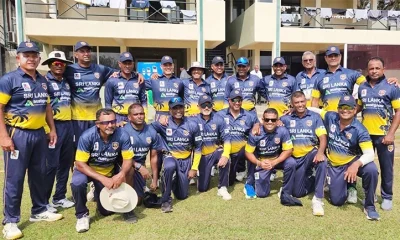
 Sports4 days ago
Sports4 days agoSri Lanka face Australia in Masters World Cup semi-final today
-

 Features6 days ago
Features6 days agoUSAID and NGOS under siege
-

 Features6 days ago
Features6 days agoDoing it in the Philippines…
-

 Midweek Review5 days ago
Midweek Review5 days agoImpact of US policy shift on Sri Lanka
-
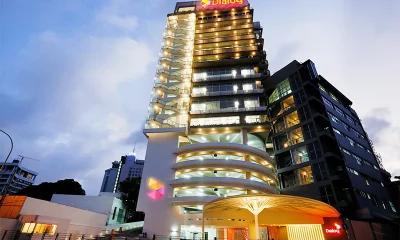
 Business6 days ago
Business6 days agoDialog delivers strong FY 2024 performance with 10% Core Revenue Growth
-

 News4 days ago
News4 days agoCourtroom shooting: Police admit serious security lapses
-
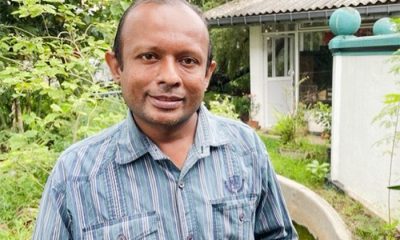
 News5 days ago
News5 days agoFSP lambasts Budget as extension of IMF austerity agenda at the expense of people


